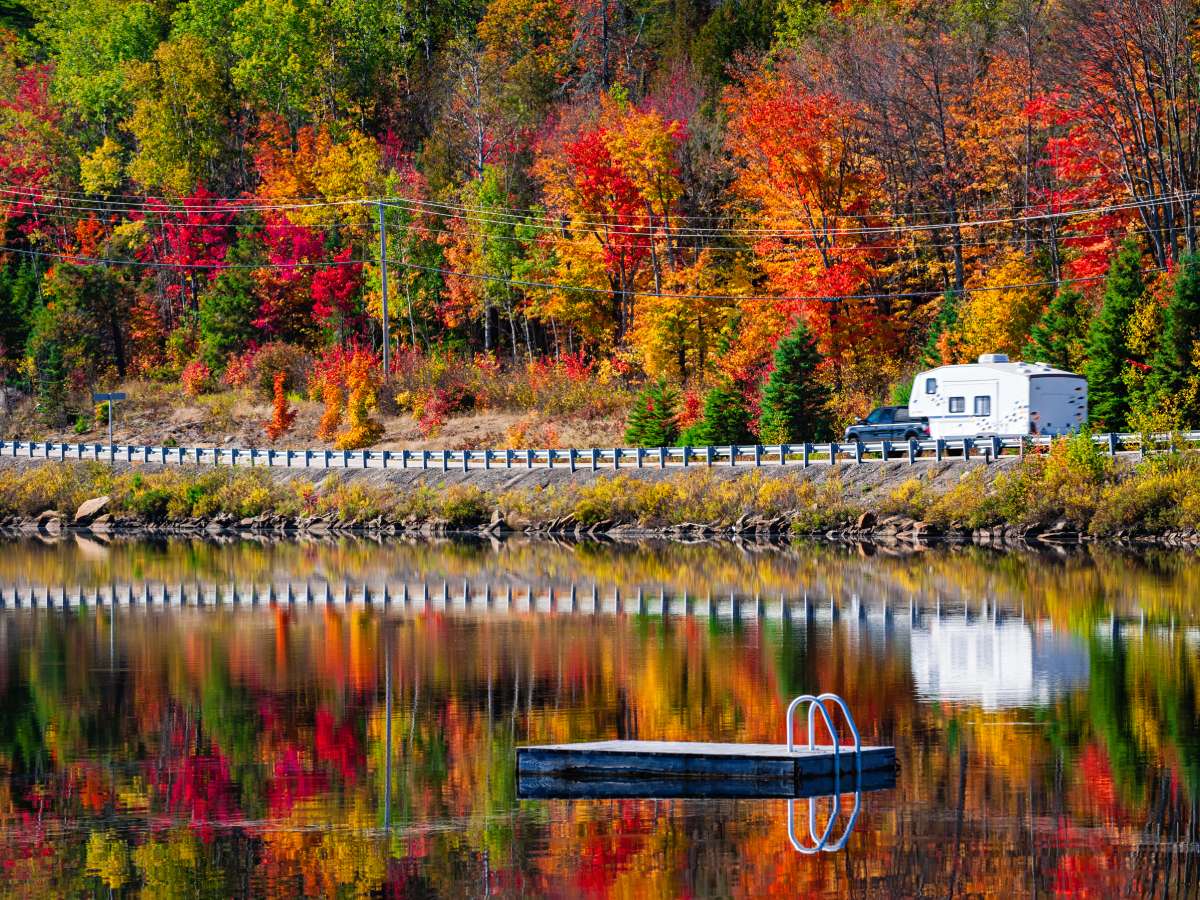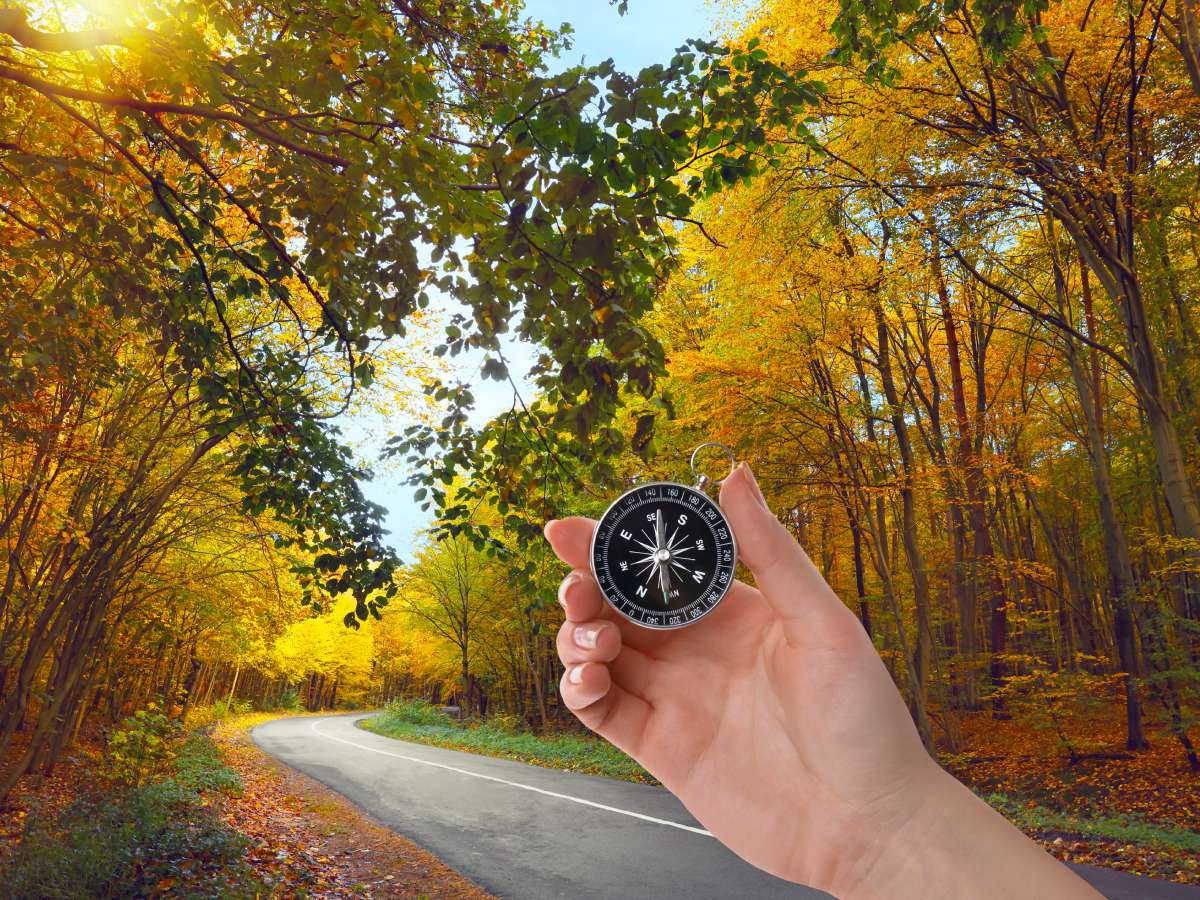2025 Fall Colors By State
Trying to plan your fall foliage vacation?
Autumn leaves pop up throughout the United States during the months of September, October, and November.
There’s even fall color in Florida, where I live, during the late autumn.
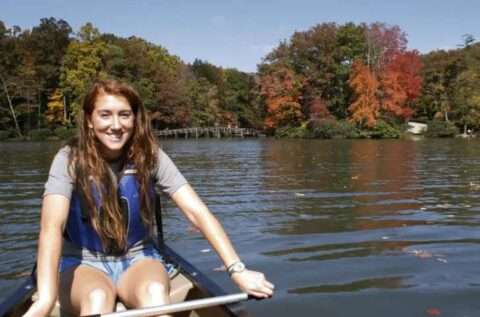
Each year, I like to track the pretty leaves in each state — so I can tell when they are likely to reach peak color.
The aim of this article is to help you decide WHERE you might want to take your fall foliage vacation this year and to help you plan WHEN you should go!
Because fall color is finicky. Every year the progression of leaves changing color is slightly different, based on what the local weather has been like (see Step #1 below).
In this article, I’ve got 4 tips that will help you plan a trip to see the colorful autumn leaves this year AND make the most of your fall foliage vacation:
- How To Use Local Weather As A Gauge For Predicting This Year’s Fall Color
- Which Fall Foliage Maps & Color Trackers Are Updated Daily
- See When Each U.S. State Is Projected To Have Peak Colors
- How To Plan Your Fall Foliage Vacation With Fun In Mind
STEP #1 – Start Keeping An Eye On Fall Color Weather From Late Spring Onward
The weather leading up to the fall color season can help predict what type of autumn leaves you may see in September, October, and November.
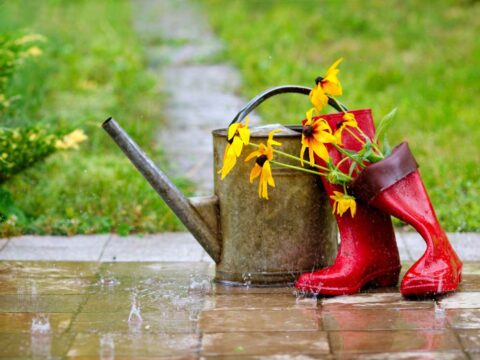
Weather during August and early September (when production of leaf chlorophyll is winding down) is particularly critical to producing vibrant leaf color during the heart of autumn.
Temperature and moisture levels are key factors in all of this:
- Warm, sunny days and cool evenings will help produce the brightest fall colors.
- Wet spring weather and balmy summer weather with adequate moisture can set up a great autumn color display.
- Droughts and erratic temperatures can delay fall color and mute its vibrancy.
Based on this information, you may be able to predict how the fall colors will appear and even estimate an approximate date for peak color during the autumn in a given area of the country.
Why do leaves change colors?
Perhaps you’re wondering how the weather affects fall colors and how foliage actually changes colors in the fall.
Ever hear of chlorophyll?
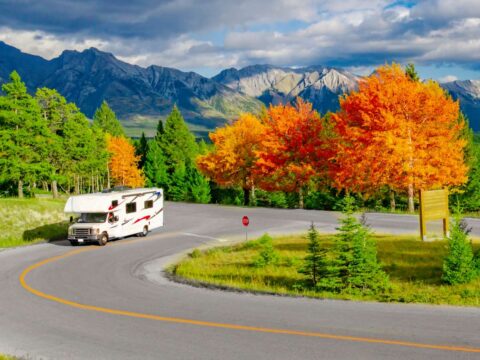
Chlorophyll is a chemical that gives leaves their green color. In fact, chlorophyll is partly responsible for making green grass stains in your sock and pants! It’s also a vital element in photosynthesis (the process in which leaves use sunlight to make sugar).
So, when chlorophyll is being produced, leaves remain green.
However, when chlorophyll production slows down (such as when nights get longer and weather gets cooler), leaves begin to lose their chlorophyll.
Carotenoids and anthocyanins (which are found in leaves throughout the year and give color to various kinds of fruit) predominate in the leaves once the chlorophyll begins to decrease. As the carotenoids and anthocyanins take over, leaves begin to change colors.
Anthocyanins bring about the red and purple hues. Carotenoids are responsible for the yellows and golds.
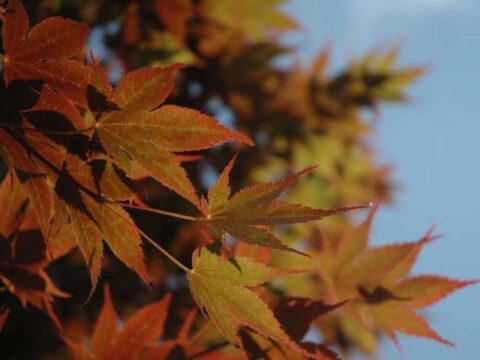
The changing colors of leaves in the fall, however, is a part of the process that lasts into the winter — when plants whose leaves are too tender to survive very cold weather must fall. This process actually helps protect these plants and enables the plants to survive into the spring, when weather is warmer and leaves may grow anew.
So basically, the leaves changing color has a lot to do with:
- Shorter days & longer nights
- Warmer autumn days & crisp cold nights
- Soil moisture levels
Since weather and changing leaf colors go hand in hand, you might want to check out these USA temperature outlook maps AND precipitation outlook maps from the National Weather Center.
Now… Are you wondering where you can see the most brilliant colors of fall this year?
I can help to point you in the right direction there, too!
STEP #2 – Use Fall Foliage Maps & Color Trackers
I love using fall foliage maps to find the most colorful leaves each year. It’s fun to check each week — to see where the colors are peaking now.

If you haven’t yet determined where you’ll be traveling this fall to see the colorful leaves, then I recommend you start here.
Fall color trackers typically include the observations of meteorologists and botanists and other professionals — who all combine their data to build a prediction (based on averages).
I don’t rely on the information from just a single fall foliage map, though. I like to use info from a combination of at least 2 independent fall color maps — to ensure that I’m getting the most thorough and diverse data available.
These are my picks for the best USA-wide and regional Fall Foliage Maps.
Scientists know their stuff and have plenty of data to back up their fall color forecasts. But they don’t always know what’s happening on the ground in your neighborhood or in the town where you’re planning to travel. That’s why I also refer to local leaf peeping blogs and local fall color trackers — to see what the local residents are saying about colorful leaves in their area. (I’ve included links below.)
Finally, keep in mind that Mother Nature has a mind of her own. As with predicting the weather, scientists and other observers can TRY to forecast where and when leaves will change color, but only Mother Nature can decide where and when she will put on her colorful fall show!
STEP #3 – For Early Season Fall Color, Go North. For Late Season Color, Go South.
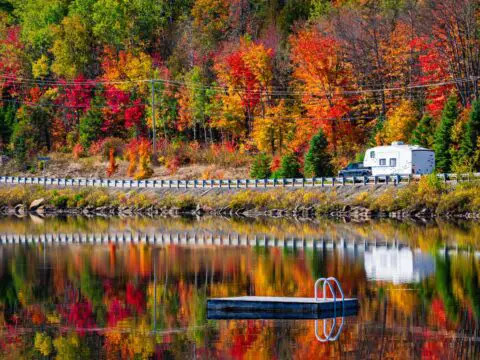
Generally speaking, the farther north you go and / or the higher the elevation, the better chance you’ll have of catching vibrant fall colors during the early season.
Want a late season leaf-peeping show? Then you’ll want to head south and scope out other areas with lower elevations.
Both options will yield some fabulous colors!
Here are the best places in each state to see the fall colors AND when to go…
When Each U.S. State Is Projected To Have Peak Colors
The links below include up-to-date fall foliage reports + feedback from the local residents in each area!
For the earliest autumn color in mid to late September, check out these places:
Leaf peepers often rejoice on the hill of these states during the first weeks of October:
- Connecticut
- Massachusetts
- Iowa
- Wisconsin
- Western North Carolina
- Ozark Mountains of Arkansas
- Tennessee
- Virginia
- West Virginia
- Mid-Elevation Rocky Mountains (parts of Arizona, Colorado, Idaho, Montana, Nevada, New Mexico, Utah, Wyoming)
If you’re looking for peak colors in late October or early November, then you’ll want to visit these areas:
- Coastal New Jersey
- Coastal Delaware
- Coastal Virginia
- Coastal Maryland
- District of Columbia
- Rhode Island
- Central and southeast Illinois
- Missouri
- Ohio
- Indiana
- Oregon
- Washington
- California
- Central Plains states: Kansas, Nebraska, North Dakota, Oklahoma, South Dakota
- Lower Appalachians (Alabama, Georgia, Kentucky, Mississippi, North Carolina, South Carolina, Tennessee)
Want a last glimpse of fall leaves in November? Here’s where to go:
- Louisiana
- Coastal North Carolina
- Coastal South Carolina
- Coastal / Lower Georgia
- Northern Florida
- Lower Alabama
- Central Texas
- Southern California
TIP: While taking the interstate is a great way to quickly get where you want to go, it’s the back roads that provide some of the most stunning fall color tours.
#4 – Plan Your Fall Foliage Vacation Early
Planning a road trip or family vacation to find the best, most colorful scenery is something that MANY people do every fall. So if you’re going to be staying in hotels and/or campgrounds, you’ll want to make arrangements early.

Here are the takeaways from this article — to help you decide where and when to go:
- Start by tracking where the fall colors currently are across the country (Step #2 above).
- Compare that information with what the locals are saying in those same areas (using the links in Step #3).
- Finally, set your course for adventure among the colorful fall leaves! (I’d love to hear where you decide to go — and why — in the Comments below.)
These ever-popular fall foliage drives will take you through some of the most scenic autumn-hued highways and byways in the United States.
Did you know?
The U.S. Forest Service has a number of roads which run through some of the most colorful forests? Such roads are a great way to see the autumn leaves from the comfort of your vehicle — while venturing to places that not everyone has been and crowds are highly unlikely. (Keep in mind, backcountry forest roads merely connect Point A to Point B on a map. They’re not always the best maintained roads, and a four-wheel drive vehicle is often recommended.)
The U.S. Forest Service even has a fall color hotline (1-800-354-4595) and online guide that you can use to find out where colorful leaves can be seen… and when.
There are even vacation packages created entirely around viewing colorful fall leaves?! For example, here’s what it’s like seeing New England fall colors by train.



